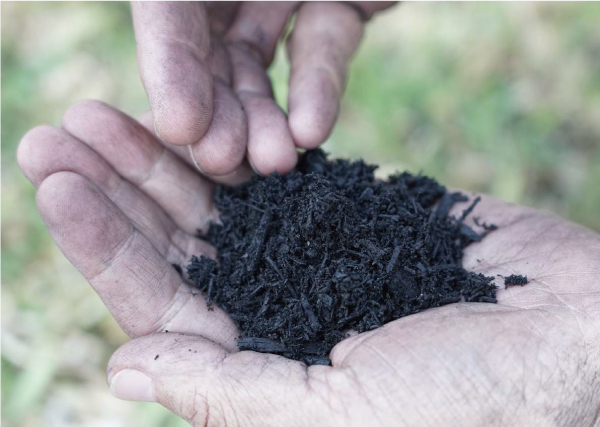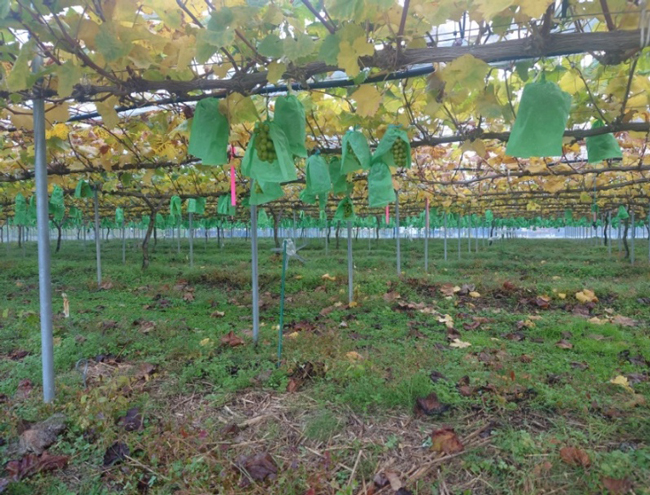
Organic JAS-compliant EM Rectified Charcoal, EM Gravitron Charcoal
EM Gravitron charcoal was developed with the aim of adding the quantum mechanical properties of EM to charcoal and efficiently connecting the energy in the soil and space to productivity. To make your own EM Gravitron charcoal, burn charcoal using a smokeless carbonizer with a rectifying seal, and when you extinguish the fire spray seawater Activated EM liquid diluted with 5 to 10 times water. (See“#115 How to make and use simple carbonized and rectified ash”)
In addition to this method, adding about 0.1% of high-Hado wave EM Gravitron charcoal made by Iwate Compost Co. Ltd. or 1% of previously burned charcoal will enhance the layering effect of EM and produce even higher quality EM Gravitron charcoal.
This charcoal has the power to rectify the energy of the environment, so it has an outstanding effect on weather fluctuations and has been sufficient to cope with the abnormal weather (drought, heavy rain) that has occurred in Hokkaido over the past few years. If utilized in a rectifying barrier-forming manner, terra preta soil can also be easily created. (Reference: U-net News Vol. 129, pages 12-13 “Rural-Urban Guruguru Eco Group.” U-net Director Fumio Ishikawa)
The following report is a case study from Hiroshima Prefecture, and further results can be expected if activated EM liquid is used well in combination and the EM barrier is strengthened.
Dear Dr. Higa,
It has been a while since we last met. My name is Ikeda and I’m from Hiroshima. At a forum in Hiroshima, you encouraged me to make EM charcoal and last year I finally started making it using bamboo charcoal and grape branches in a smokeless carbonizer. Last year, we sprayed 500 kg of the charcoal on 30a of the vineyard in front of my house.
The grapes are grown by four women whose average age is 70, and even in this year’s absurdly hot summer, the grape trellises were comfortable to work with and we were able to continue doing our detailed work. It seems to me that the charcoal absorbs the sudden rise in temperature and stores it as hydrogen, and when the temperature drops, it releases it to become moisture. The result is that the vineyard always feels moist. The grapes are harvested completely out of season, and left on the vine from October until around November 20th and are shipped after that. Other production areas only have refrigerated products, so it is easy to see the difference if put side by side. They can be stored throughout December. I’d love for you to try our grapes.
The town of Jinsekikogen has been working on a green strategy for the past three years and has decided to include charcoal for organic farmers, so we will make 2 tons of EM charcoal this year. I also plan to join the Japan CoolVege Associations and obtain J Credit. I think we can conduct demonstration tests as a response to rapid temperature rises and global warming.
Dr. Higa, please take care of yourself and stay well.
Hironobu Ikeda
Jinsekikogen-cho Jinseki-gun, Hiroshima Prefecture

We cover our grapes with bags at the end of July every year to protect them from pests, and then harvest them out of season from October to the end of November. We place activated EM in plastic bottles every 2 meters and bury EM bokashi balls in the ground every meter to enclose the orchard. This year we had no bird or animal damage, though a badger that entered through the drainage pipe did eat some grapes.
Birds did not invade the orchard, and though the area around our orchard is full of wild boars and deer that can cause damage, they have not yet entered our orchard at all.







Last year we only made bamboo charcoal, but this year we were able to make 500kg of EM charcoal using branches from a 30 are vineyard. The first-year branches have a wide hollow space inside, and I think they can be used for something other than as bamboo charcoal. This is the fifth year of slow growing grape cultivation, and I believe this technique has become one we can rely on. For producers like us, being able to avoid the hot season and wait until the weather has cooled down to ship our produce is extremely helpful when it comes to our physical stamina.
Read the original Japanese message at the link below.
2024.3.1 Updated.